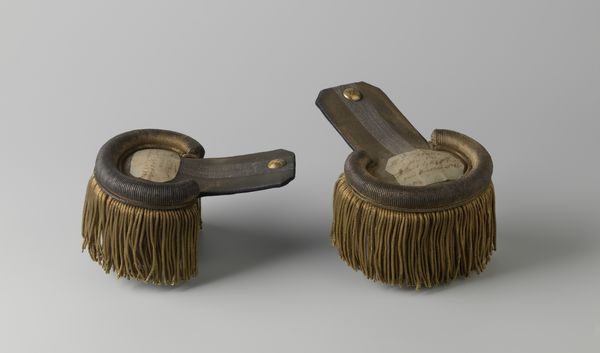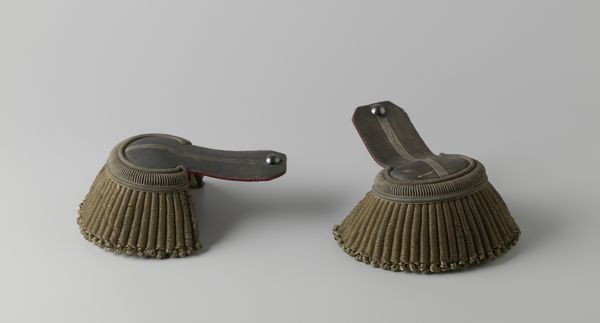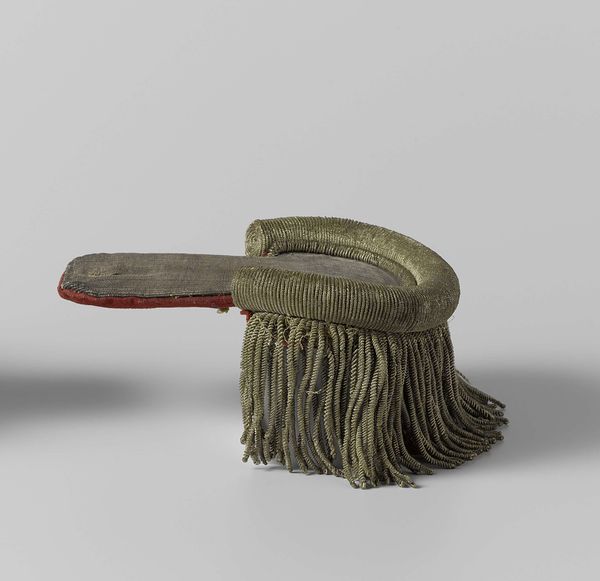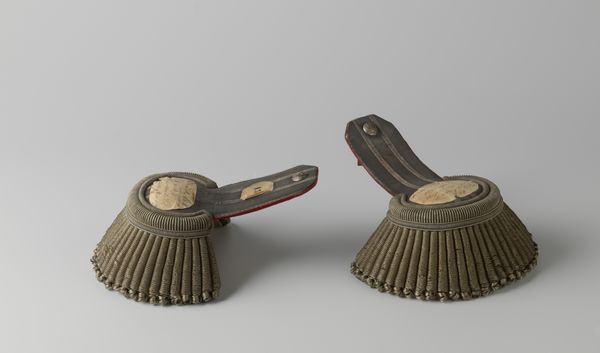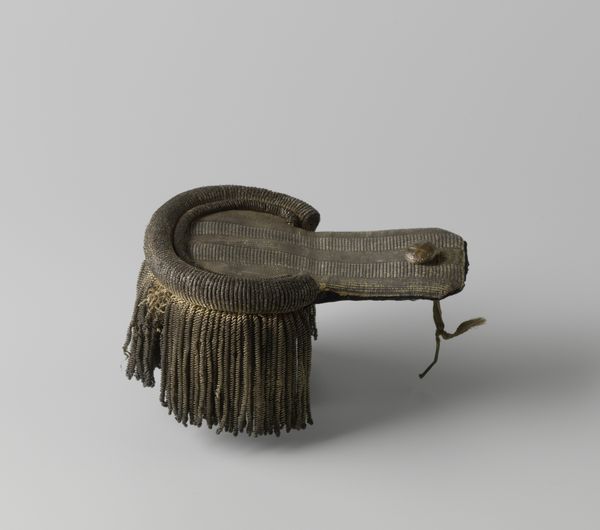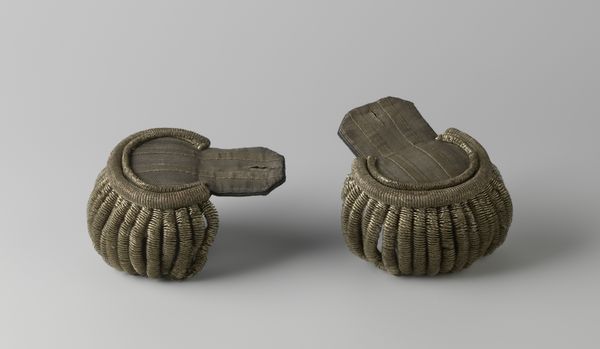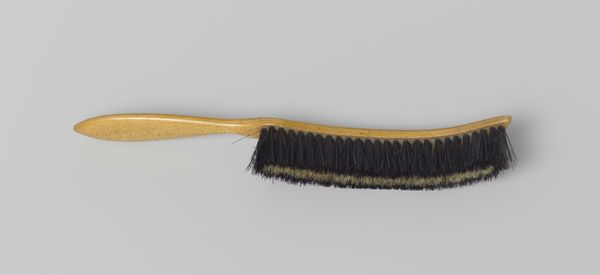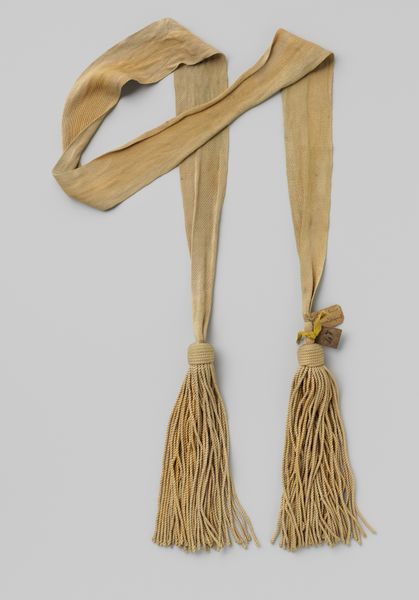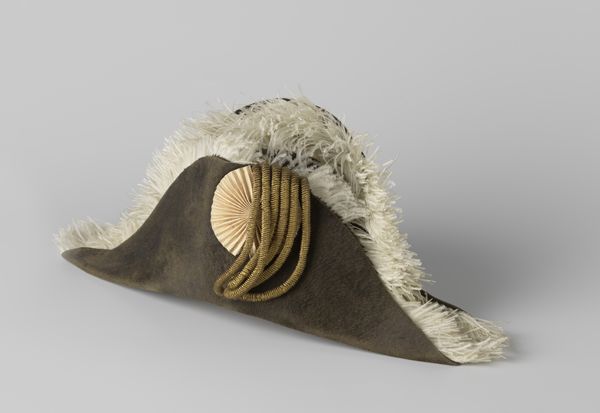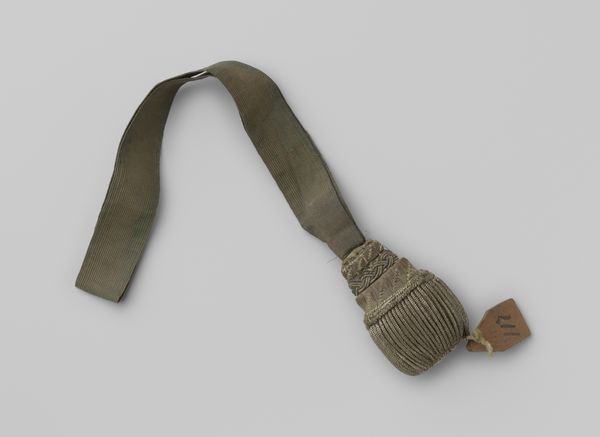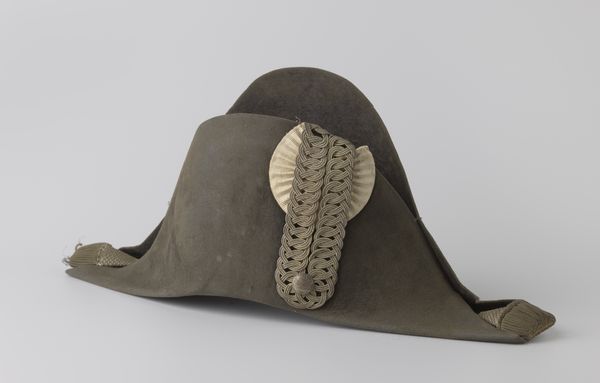
Paar epauletten gedragen door H.C. Broos in 1830/32 2e luitenant, 1e bat., 2e Afd. N.H. Schutterij 1830 - 1840
0:00
0:00
photography
#
portrait
#
photography
#
decorative-art
Dimensions: height 29.5 cm, width 35 cm, depth 29.5 cm, length 18.5 cm, length 9 cm
Copyright: Rijks Museum: Open Domain
Curator: These are a pair of epaulettes, dating from 1830 to 1840. They were worn by H.C. Broos, a second lieutenant in the Dutch Civil Guard. Editor: The moment I saw them, I imagined a serious, almost melancholy figure. Perhaps standing rigidly in some square, weighed down by duty and these rather ornate… tassels. They speak of formality but also of something slightly theatrical, don’t you think? Curator: Absolutely. The epaulettes speak volumes about social structures and the importance of civic duty in the Netherlands during that period. The Civil Guard played a key role in maintaining order and defending the nation, particularly after the Belgian Revolution. Uniforms like these reinforced identity and belonging. Editor: Belonging, yes, but also the burden of representation. I can almost feel the weight of those responsibilities just looking at them. Each little fringe seems like a worry, or a thought the wearer has to shoulder. Are they gold? Or perhaps brass? I imagine that shimmering in the sunlight, briefly diverting one from any somber thought that may weigh on their heart... Curator: Most likely they are gold or gilded brass, yes. And consider the visual statement—these aren't just practical shoulder coverings, these are emblems of authority. Emblems meant to inspire loyalty and project power. In a relatively newly formed nation, these displays had significant political impact. Editor: Yes, symbols crafted to bolster national identity and cement one’s standing. But there is something quite human about these particular epaulettes. One can envision Lieutenant Broos perhaps fretting slightly, prior to some parade or assembly...Did he polish them properly? And how did they feel on his shoulders as he was walking into perhaps quite a perilous situation? Curator: Indeed. Artifacts like this invite us to reflect on the relationship between individuals and the grand narratives of history. We look at them as isolated objects now, but their original impact resided in a context of complex relationships between citizen, state, and national image-making. Editor: And I find myself thinking about that single person wearing them, and wondering what their experiences were. Looking at the meticulous detail, I realize these were made not for war, but for some other stage in life – these speak volumes about hope for national identity and some kind of perceived order, don’t they? A lot to balance upon two shoulders. Thank you. Curator: A poignant reminder of history's intersection with individual lives. Thank you as well.
Comments
No comments
Be the first to comment and join the conversation on the ultimate creative platform.

